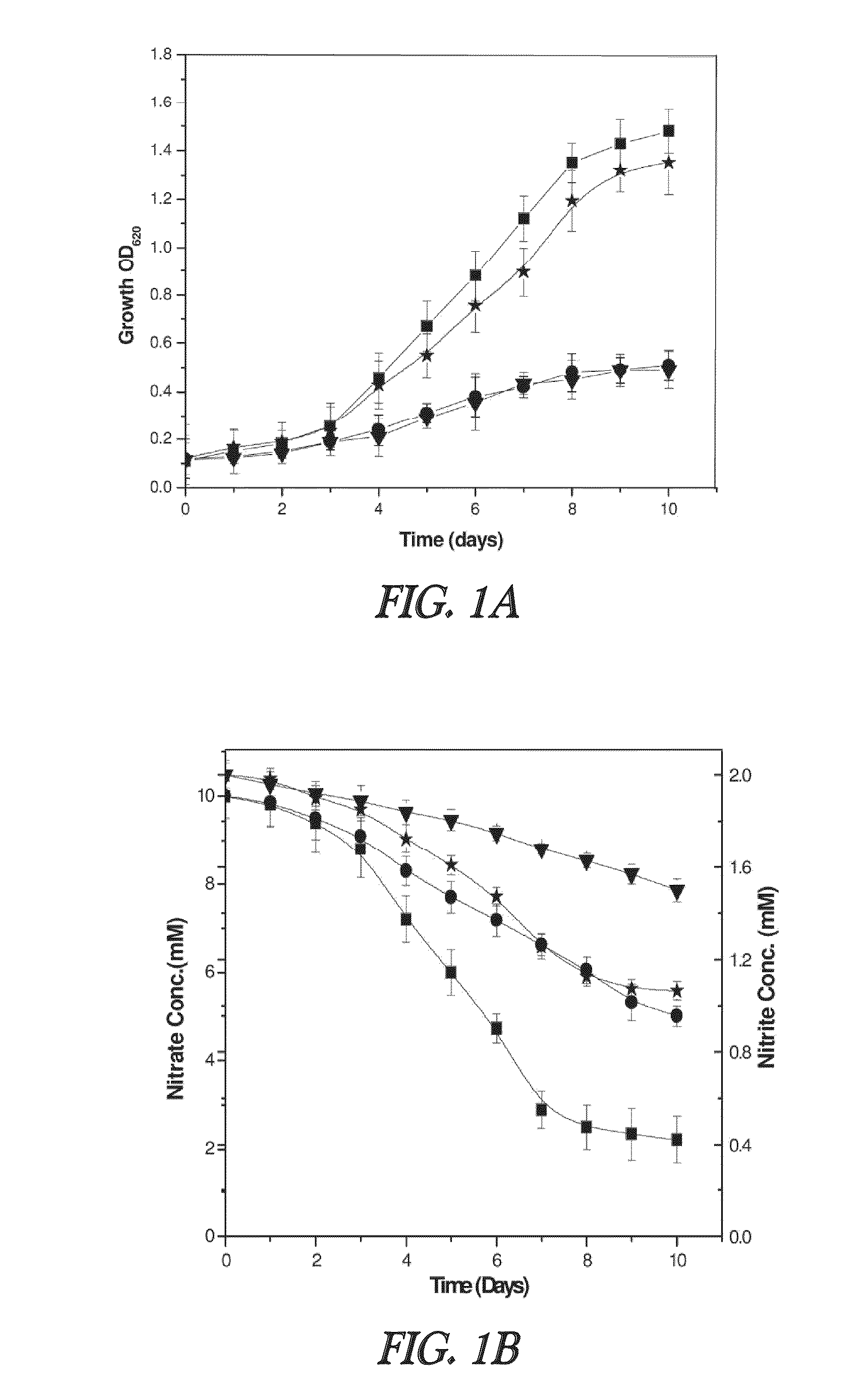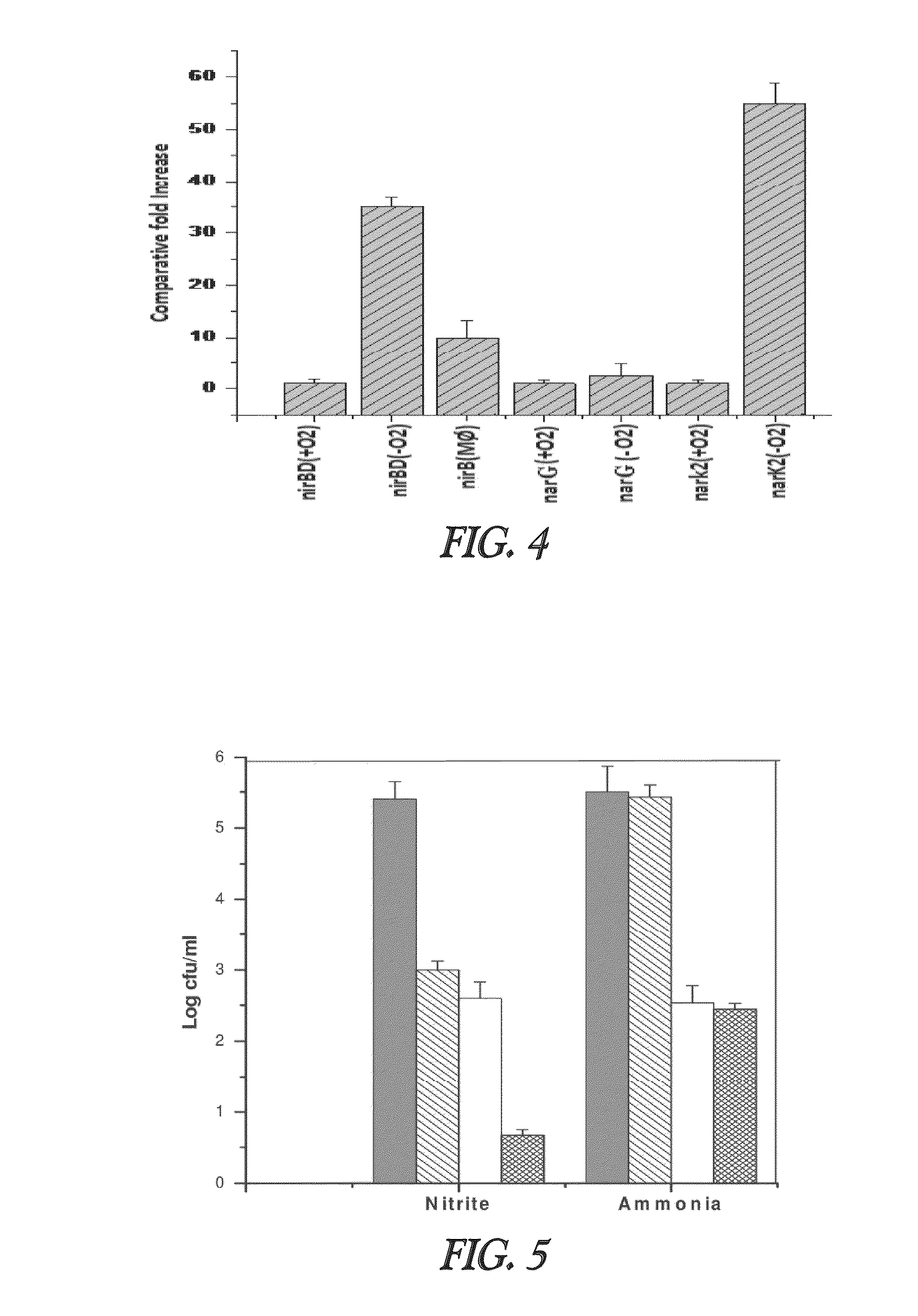Nitrite-reductase (NIRB) as potential Anti-tubercular target and a method to detect the severity of tuberculosis disease
- Summary
- Abstract
- Description
- Claims
- Application Information
AI Technical Summary
Benefits of technology
Problems solved by technology
Method used
Image
Examples
example 1
a. Reagents
[0071]Sulphanilic acid, N-(1-napthyl)ethylenediamine dihydrochloride (NEDD), was purchased from Merck (India). Dubos broth base and Dubos albumin supplements were purchased from Difco (USA). Standard sterile flat-bottom 96-well plates were purchased from Tarsons (India). Fetal bovine serum (FBS) and minimum essential medium (MEM; without phenol red) were purchased from GIBCO Biosciences.
b. Bacterial Strains, Chemicals and Media
[0072]Mycobacterium tuberculosis H37Ra (ATCC 25177) was obtained from IMTECH, Chandigarh, India. Chemicals purchased from Sigma, USA unless mentioned. A defined medium used for our studies, containing 0.5 gm KH2PO4, 0.25 gm sodium citrate, 60 mg MgSO4, 2 mM nitrite and 2 ml glycerol in 100 ml of distilled water at pH 6.6±0.2 used throughout the study. The stock cultures maintained at −70° C. and sub-cultured in liquid medium before inoculation to an experimental culture.
c. Cultivation of Aerobic and Dormant Bacilli
[0073]For aerobic cultivation, bact...
example 2
Estimation of Nitrate and Nitrite in Liquid Culture
[0075]Nitrate concentration in the culture was determined by a method based on salicylic acid nitration. Briefly, 50 μl of the culture was added with 200 μl of 5% salicylic acid solution prepared in conc. sulfuric acid. The solution was incubated for 20 min and 4.75 ml of 2N sodium hydroxide was added to develop yellow color. Absorbance of the sample read at 410 nm and nitrate concentration was determined by comparing standard nitrate curve.
[0076]Nitrite concentration in whole cell culture was estimated by Griess method. Briefly, 1 ml of the culture was added with 1 ml of 1% sulphanilic acid (prepared in 20% HCL) and incubated for 15 mins before addition of 1 ml of 1% naphthylenediamine dihydrochloride (NEDD) solution (prepared in DW). The tube was incubated for 15 min to develop pink color. Absorbance was measured at 540 nm and nitrite concentration was calculated by using nitrite standard curve.
[0077]For the detection of nitrite i...
example 3
THP-1 Monocytes Maintenance and Infection with Mycobacterium tuberculosis
[0079]THP-1 cell line maintained, routinely sub-cultured and infected with M. tb as follows. THP-1 cell line (ATCC® Cat. no. TIB-202™) was maintained in a 25 cm2 tissue culture flask containing MEM cell culture medium with 10% heat-inactivated FBS. THP-1 cells (5×104 cells / ml) were treated with 100 nM phorbol myristate acetate in a culture flask for 24 h to convert monocytes to macrophages. These macrophage cells were incubated for 12 h with MTB at multiplicity of infection (MOI) of 1:100 for infection.
PUM
 Login to View More
Login to View More Abstract
Description
Claims
Application Information
 Login to View More
Login to View More - R&D
- Intellectual Property
- Life Sciences
- Materials
- Tech Scout
- Unparalleled Data Quality
- Higher Quality Content
- 60% Fewer Hallucinations
Browse by: Latest US Patents, China's latest patents, Technical Efficacy Thesaurus, Application Domain, Technology Topic, Popular Technical Reports.
© 2025 PatSnap. All rights reserved.Legal|Privacy policy|Modern Slavery Act Transparency Statement|Sitemap|About US| Contact US: help@patsnap.com



